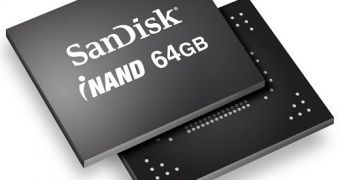Even though it had become something of a usual phenomenon for NAND Flash prices to keep shifting, it seems that quotes remained more or less unchanged during the past two weeks, or so say reports.
The semiconductor market has already been predicted to go through a fairly odd year.
While the market mostly recovered in 2009, some demand-supply issues ended up changing the behavior of the DRAM and NAND segments, among other things.
While DRAM chips have been going through a continued period of declining prices, NAND managed to recovered mid-way.
Flash memory prices did fall for a while, but changes on the PC market and especially the rise of tablets led to ASP rebounds.
Now, a report says that prices managed to not change at all during the second half of January.
16 Gb and 32 Gb parts averaged at US$3.56 and US$5.38, respectively, according to DRAMeXchange, while 32 Gb 3-bit per cell MLC parts stayed at US$4.30.
The favorable conditions were the rising flash demand for system products, like tablets and smartphones.
The not so favorable developments that would have, under different conditions, led to price decline was the situation on the memory card market.
Apparently, memory card makers restocked their inventories before the middle of the month and are not very keen on purchasing chips at the moment.
Basically, flash cards and drives haven't been growing and selling at the rate they would have liked, hence the low demand in this sector.
Moving forward, the Lunar New year holidays are expected to prompt a drop in prices, since consumer electronics will enter a weaker season, although slates and smartphones may continue to alleviate this issue.

 14 DAY TRIAL //
14 DAY TRIAL //